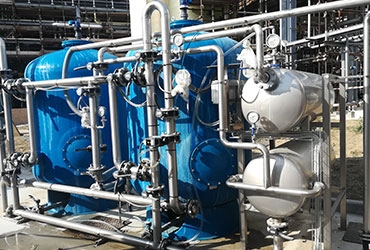Our Products
Products
Our plants
TA SRL - società a socio unico is engaged in the design and construction of water filtration, treatment and purification plants. Solutions offered include advanced technologies such as reverse osmosis, nanofiltration, ultrafiltration and microfiltration. The company provides systems for the food industry, process liquid and primary water treatment, using polymeric or inorganic membranes. TA also offers pretreatment and purification systems, such as sand and activated carbon filters, and accessories for effective water process management.

We study the most suitable solution for your company.




